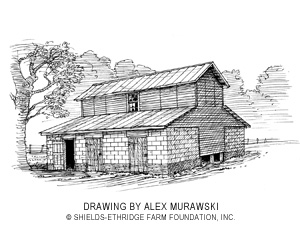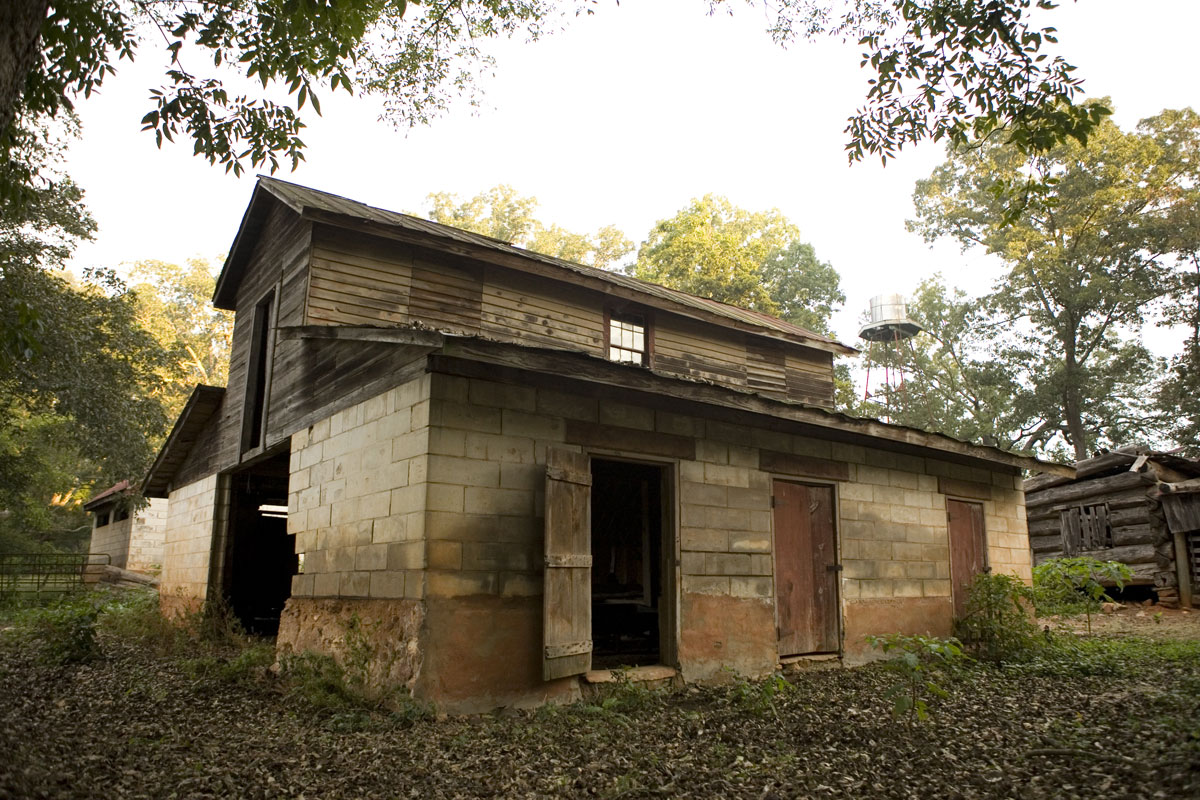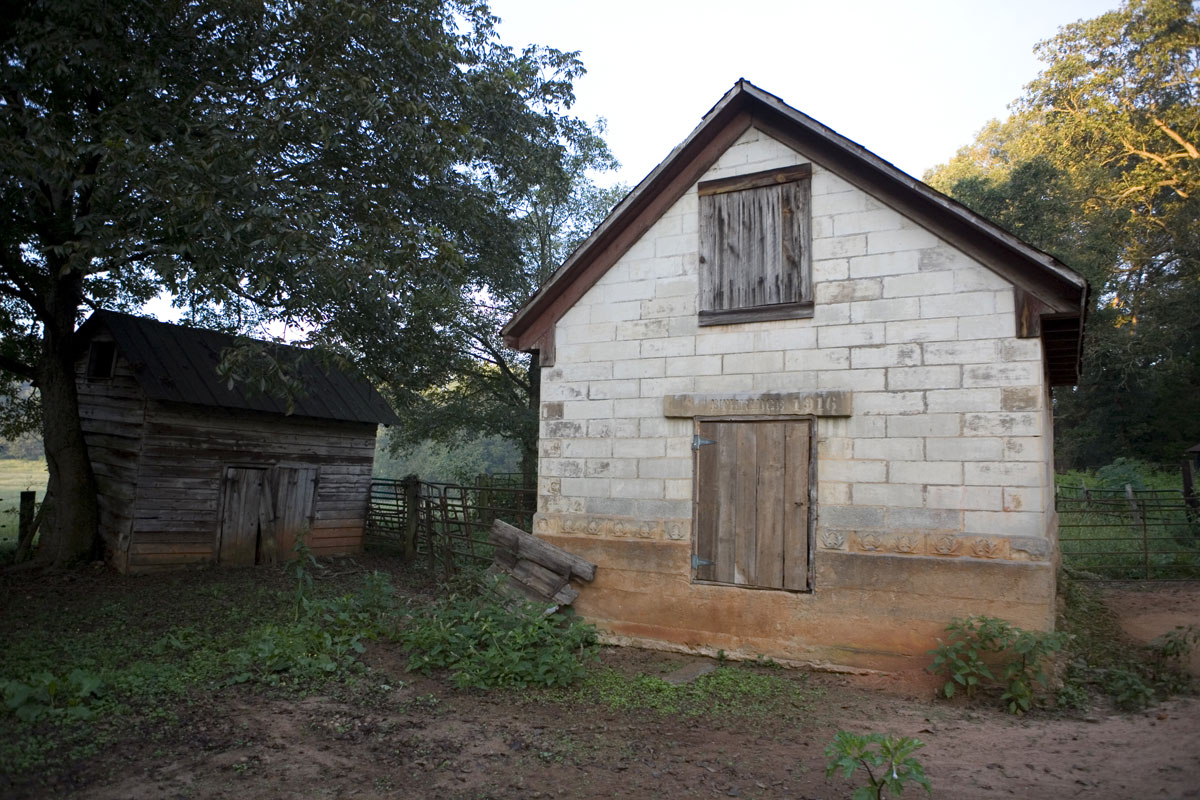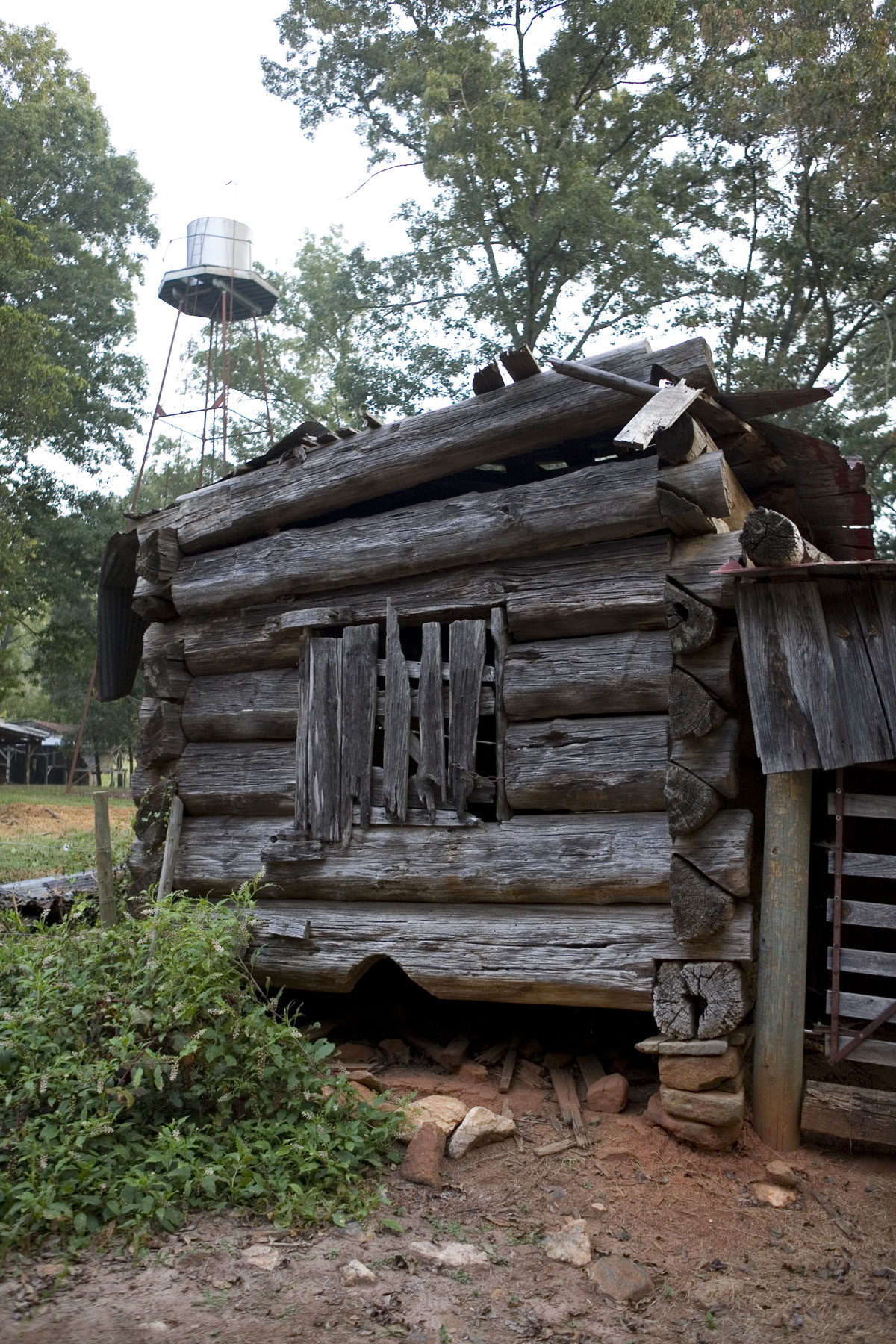 Although Mr. Ira was keen to keep abreast of the latest developments in farming, most of the work on his cotton farm was still done by a combination of mule and human muscle-power. In the 1940s there were 26 mules on the farm that were used to till the fields and pull wagons and other farm equipment.
Although Mr. Ira was keen to keep abreast of the latest developments in farming, most of the work on his cotton farm was still done by a combination of mule and human muscle-power. In the 1940s there were 26 mules on the farm that were used to till the fields and pull wagons and other farm equipment.
At that time there were two main mule barns plus a small two-stall barn in the fenced barnyard, but it seems likely that mules were kept outdoors in the yard most of the time rather than in these buildings. Of the two large barns, one remains: this six-stall barn standing in the center of the yard is built mostly of concrete block resting on a poured concrete foundation.
 The large stones used as aggregate in this foundation give this concrete a distinctive handmade appearance. Three doors on each side of the building and sliding doors at each end give it an open well-ventilated character. The wooden loft above the central bay was filled with hay that could be forked down into the manger suspended above the feeding troughs.
The large stones used as aggregate in this foundation give this concrete a distinctive handmade appearance. Three doors on each side of the building and sliding doors at each end give it an open well-ventilated character. The wooden loft above the central bay was filled with hay that could be forked down into the manger suspended above the feeding troughs.
 Around the edges of the barnyard stand a number of smaller buildings: the two-stall barn, a feed house, and two corncribs.
Around the edges of the barnyard stand a number of smaller buildings: the two-stall barn, a feed house, and two corncribs.
The barn and feed house are plain wooden frame structures while the cribs provide an interesting contrast.
One of these cribs is made with concrete blocks, some of which have an ornamental character, and above the door an inscription on the lintel reads “Ethridge 1916.”
 The other crib is a much older structure made of massive logs with half-dovetail joints.
The other crib is a much older structure made of massive logs with half-dovetail joints.
This structure is raised on stone piers, and beside it there was a small hog pen; the hogs were able to crawl under the crib and thus prevent rats from infesting that space.
